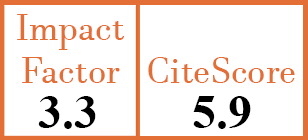Paediatric Rheumatology
Clinical predictors of remission in systemic juvenile idiopathic arthritis/Still’s disease: insight from real-life data and the potential relevance of the ‘window of opportunity’
S. Abu-Rumeileh1, M.V. Mastrolia2, A. Laurent3, M. Fouillet-Desjonqueres4, F. Zekre5, I. Pagnini6, E. Marrani7, I. Maccora8, A. Belot9, G. Simonini10
- Rheumatology Unit, Paediatric Department, AOU Pisana, Santa Chiara Hospital, Pisa, Italy. sarah.arumeileh@gmail.com
- Rheumatology Unit, ERN ReCONNET Center, Meyer Children’s Hospital IRCCS, Florence; and NEUROFARBA Department, University of Florence, Florence, Italy.
- Nephrology and Rheumatology Unit, Hospices Civils de Lyon, Hôpital Femme-Mère-Enfant, Lyon, France.
- Nephrology and Rheumatology Unit, Hospices Civils de Lyon, Hôpital Femme-Mère-Enfant, Lyon, France.
- Nephrology and Rheumatology Unit, Hospices Civils de Lyon, Hôpital Femme-Mère-Enfant, Lyon, France.
- Rheumatology Unit, ERN ReCONNET Center, Meyer Children’s Hospital IRCCS, Florence, Italy.
- Rheumatology Unit, ERN ReCONNET Center, Meyer Children’s Hospital IRCCS, Florence, Italy.
- Rheumatology Unit, ERN ReCONNET Center, Meyer Children’s Hospital IRCCS, Florence; and NEUROFARBA Department, University of Florence, Florence, Italy.
- Nephrology and Rheumatology Unit, Hospices Civils de Lyon, Hôpital Femme-Mère-Enfant, Lyon, France.
- Rheumatology Unit, ERN ReCONNET Center, Meyer Children’s Hospital IRCCS, Florence; and NEUROFARBA Department, University of Florence, Florence, Italy.
CER18542
2025 Vol.43, N°10
PI 1823, PF 1829
Paediatric Rheumatology
Free to view
(click on article PDF icon to read the article)
PMID: 41133354 [PubMed]
Received: 16/01/2025
Accepted : 09/06/2025
In Press: 23/10/2025
Published: 23/10/2025
Abstract
OBJECTIVES:
To investigate potential predictors of remission and relapse in systemic juvenile idiopathic arthritis (sJIA), in a real-life clinical setting.
METHODS:
An observational bicentric cohort study was conducted including patients diagnosed with sJIA between 2017 and 2022 in two tertiary paediatric hospitals.
RESULTS:
64 sJIA patients were included. The time from first symptom to diagnosis (hazard ratio (HR): 0.991) and interleukin 1 (IL1) inhibitors treatment failure (HR: 0.236) resulted predictors of a longer time to achieve remission on therapy. Clinical inactive disease at month 3 (HR: 3.506) predicted a shorter interval of time to remission off medication while anti-IL1 failure (HR: 0.153) was found to be a predictor of longer time to achieve remission off medication. The presence of rash three months after onset (HR: 5.763) resulted significantly associated with a shorter time to relapse, while the male gender resulted a protective factor (HR: 0.247). IL1 inhibitors non-responder patients (15/42, 35.7%) presented a lower age (p=0.040) and a higher frequency of polyarthritis at onset (p=0.029), a non-monophasic disease course (p<0.001), a higher number of relapses (p=0.010), and a longer time to achieve remission on therapy (p<0.001).
CONCLUSIONS:
A diagnostic and therapeutic delay predicts a longer time to reach remission in sJIA patients, and seems to affect the response to IL1 inhibition, according to the ‘window of opportunity’ hypothesis in sJIA treatment. A failure to IL1 inhibitors predicts a longer time to reach remission both on and off medications and is associated with an early polyarticular onset and non-monophasic disease course.


